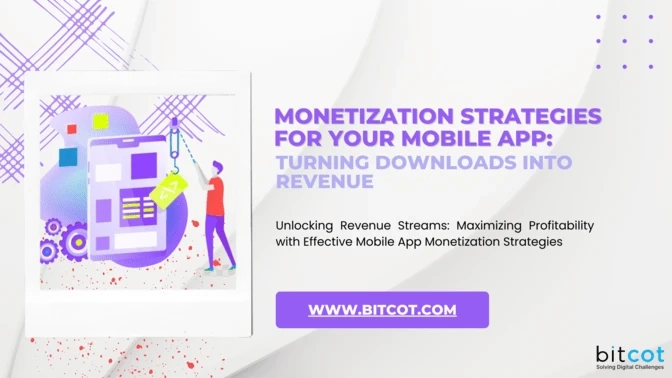In today's app-saturated market, building a successful mobile app goes beyond just attracting downloads; it's about generating sustainable revenue streams. Monetization strategies play a crucial role in converting app users into paying customers and maximizing the profitability of your mobile application. Let's explore some effective monetization strategies to help you turn downloads into revenue.
In-App Advertising
Incorporating advertisements within your mobile app is a common monetization strategy that allows you to earn revenue from advertisers. Display ads, interstitial ads, and native ads are popular formats that can be integrated seamlessly into your app's user interface. However, it's essential to strike a balance between ad placement and user experience to avoid disrupting the app's usability and driving users away.
Freemium Model
The freemium model offers a free version of the app with basic features, while premium features are locked behind a paywall. Users can download the app for free and then choose to upgrade to a paid version or purchase additional features or content through in-app purchases (IAPs). This model allows you to attract a larger user base with a free offering while generating revenue from users who are willing to pay for enhanced functionality.
In-App Purchases (IAPs)
Offering virtual goods, premium content, or additional features for purchase within the app is another effective monetization strategy. Whether it's unlocking levels in a game, accessing exclusive content in a media app, or purchasing digital goods in an e-commerce app, in-app purchases provide users with value-added options while generating revenue for the app developer.
Subscription Model
The subscription model involves offering access to premium content or services on a recurring basis in exchange for a subscription fee. This model is particularly well-suited for apps that provide ongoing value, such as streaming services, fitness apps, or productivity tools. By offering subscription tiers with varying levels of features and benefits, you can cater to different user preferences and maximize revenue potential.
Sponsorship and Partnerships
Collaborating with brands or sponsors to integrate sponsored content, promotions, or branded experiences within your app can be a lucrative monetization strategy. By leveraging your app's audience and engagement metrics, you can attract sponsors who are willing to pay for exposure to your user base. However, it's essential to ensure that sponsored content aligns with your app's target audience and adds value rather than detracting from the user experience.
Affiliate Marketing
Integrating affiliate marketing links or referral programs within your app allows you to earn commissions for driving traffic or sales to third-party products or services. Whether it's promoting products related to your app's niche or partnering with affiliate networks, affiliate marketing can be a passive yet effective way to monetize your app and diversify revenue streams.
Data Monetization
Collecting and monetizing user data responsibly can also be a source of revenue for mobile apps. By anonymizing and aggregating user data, you can provide valuable insights and analytics to advertisers, researchers, or other businesses interested in understanding consumer behavior and trends. However, it's crucial to prioritize user privacy and security and obtain proper consent before collecting or sharing any personal data.
Conclusion:
Implementing effective monetization strategies is essential for turning downloads into revenue and building a sustainable business around your mobile app. Whether it's through in-app advertising, freemium models, in-app purchases, subscriptions, sponsorships, affiliate marketing, or data monetization, choosing the right monetization strategy depends on your app's target audience, value proposition, and business goals. By diversifying revenue streams and prioritizing user experience, you can maximize the profitability and success of your mobile application.


